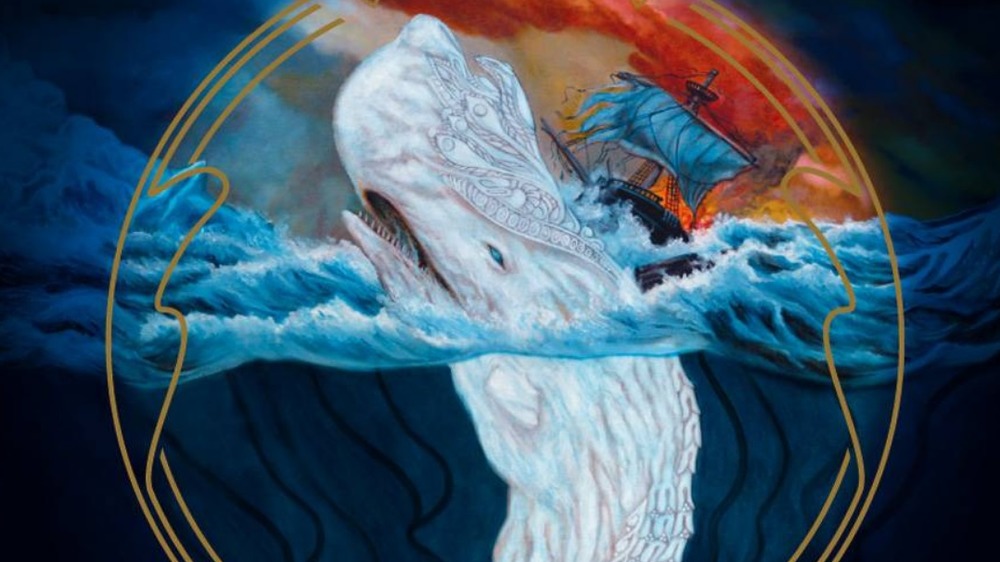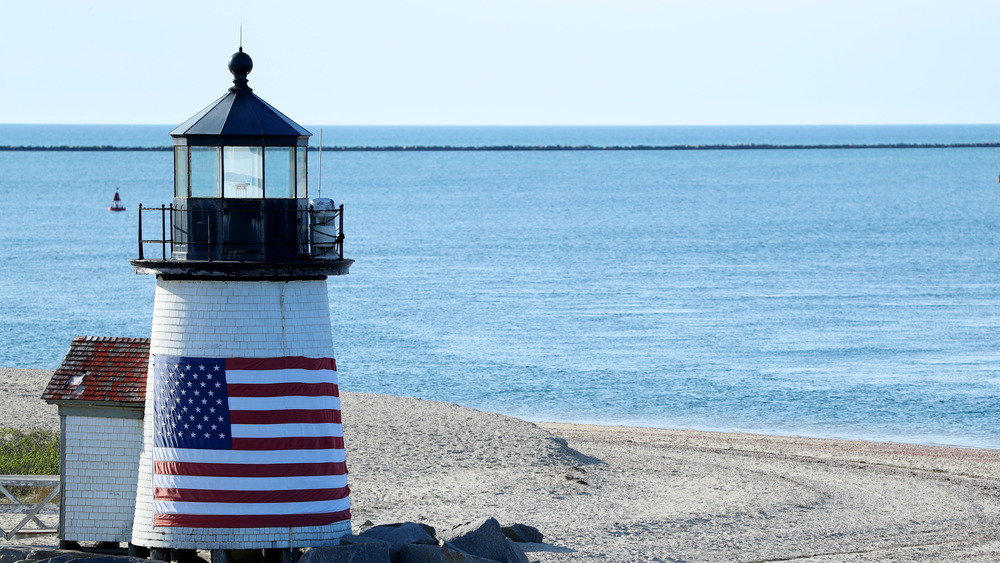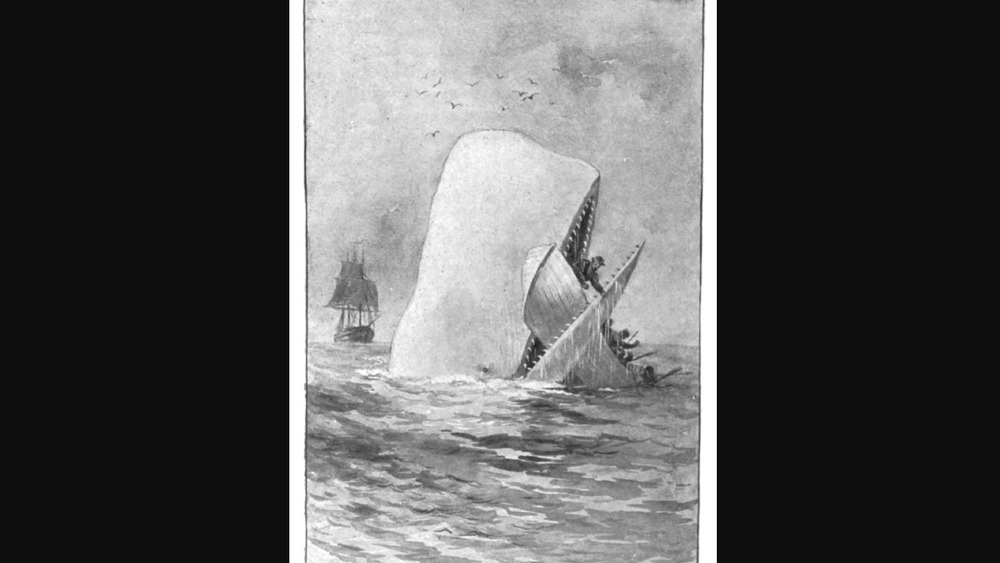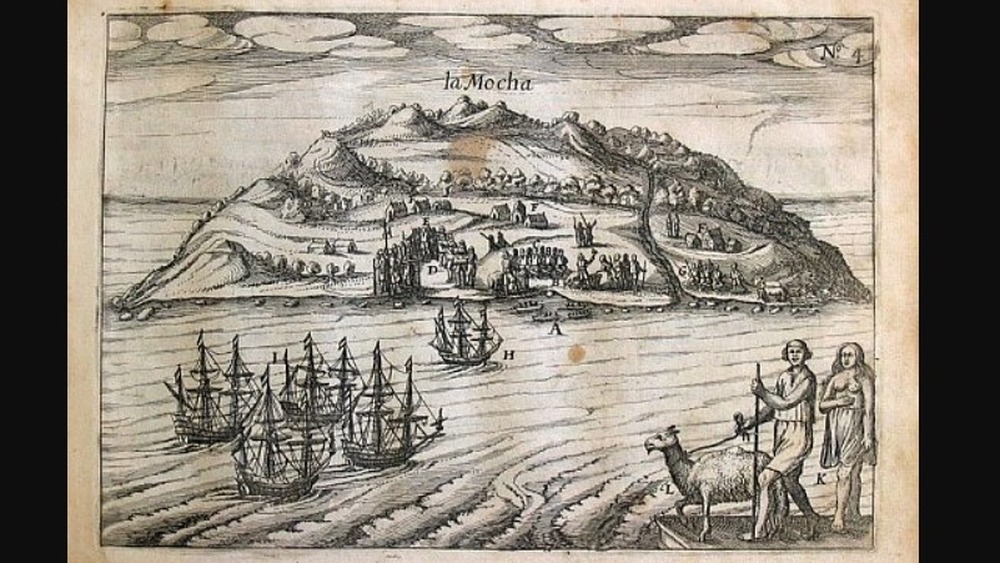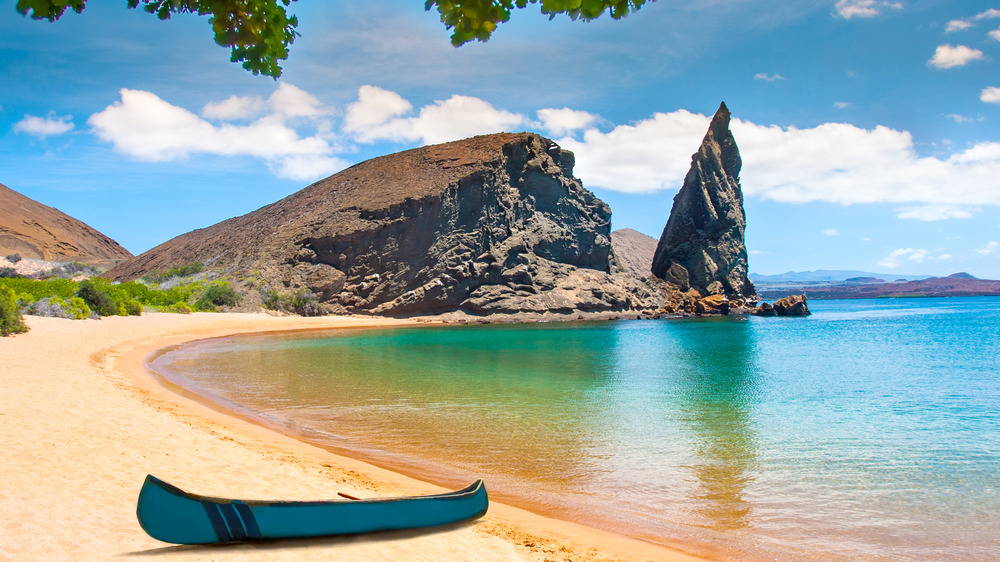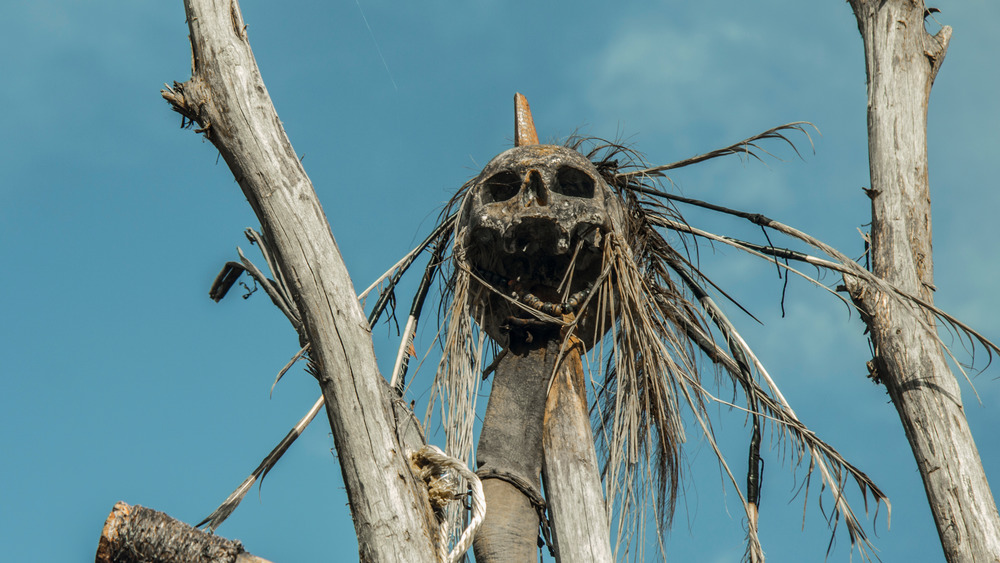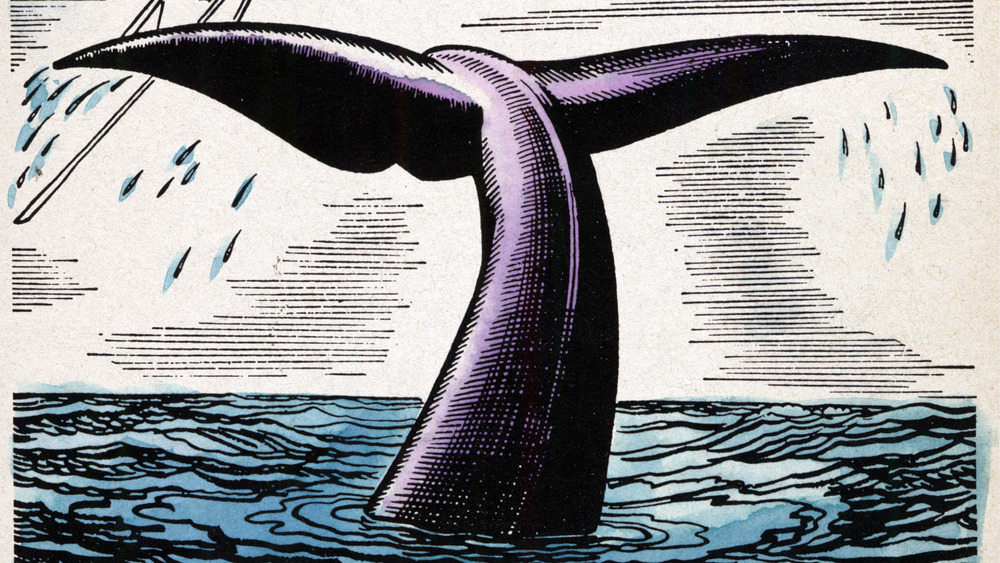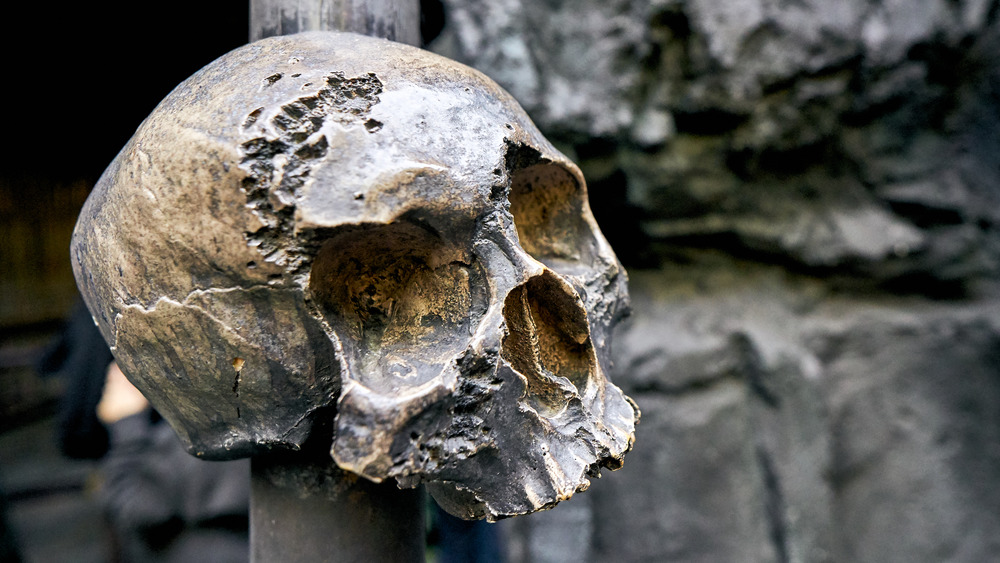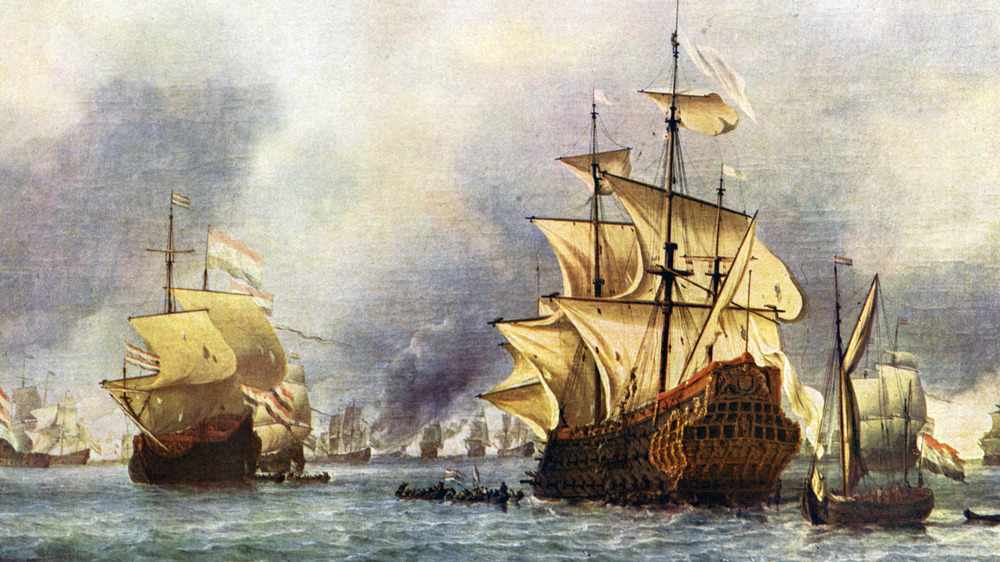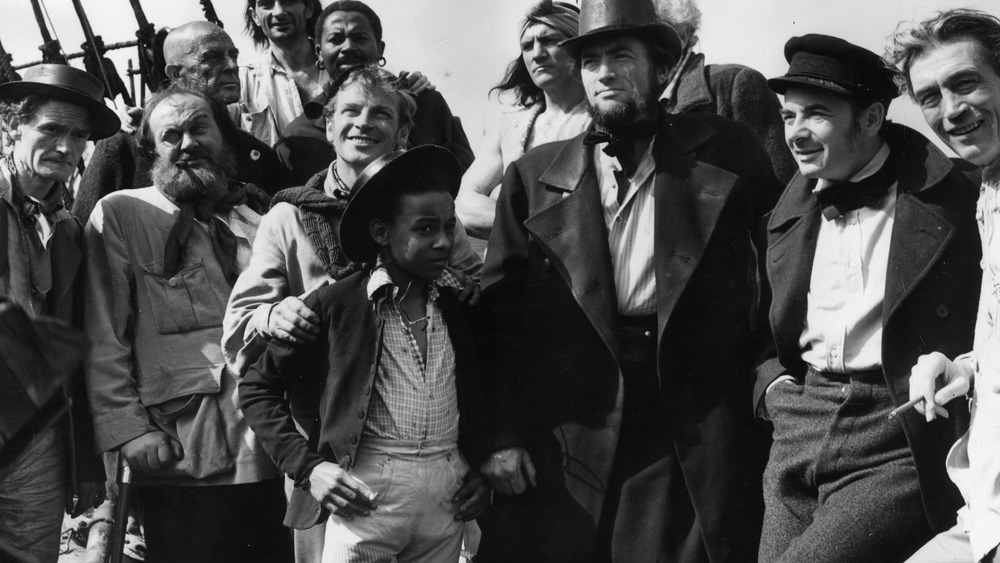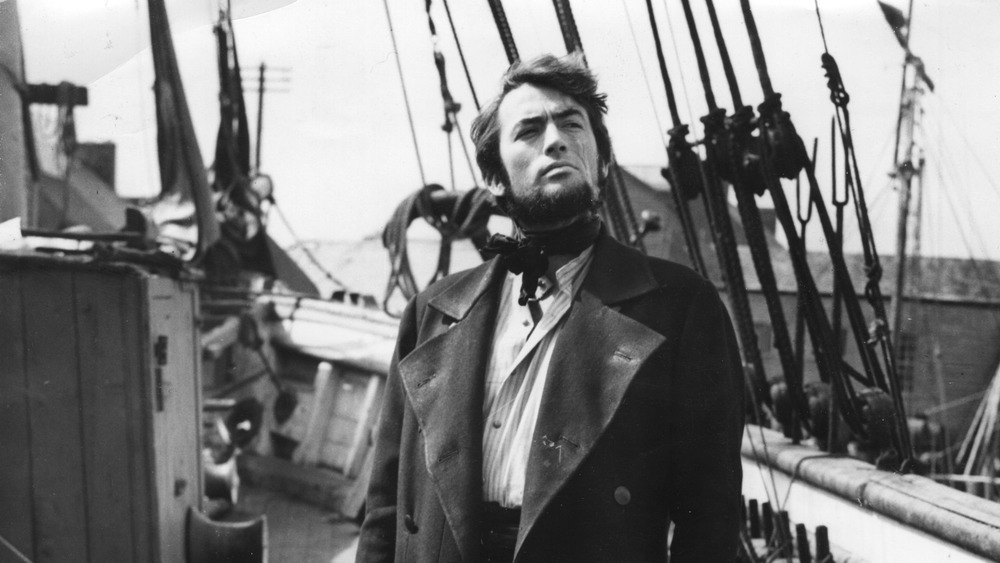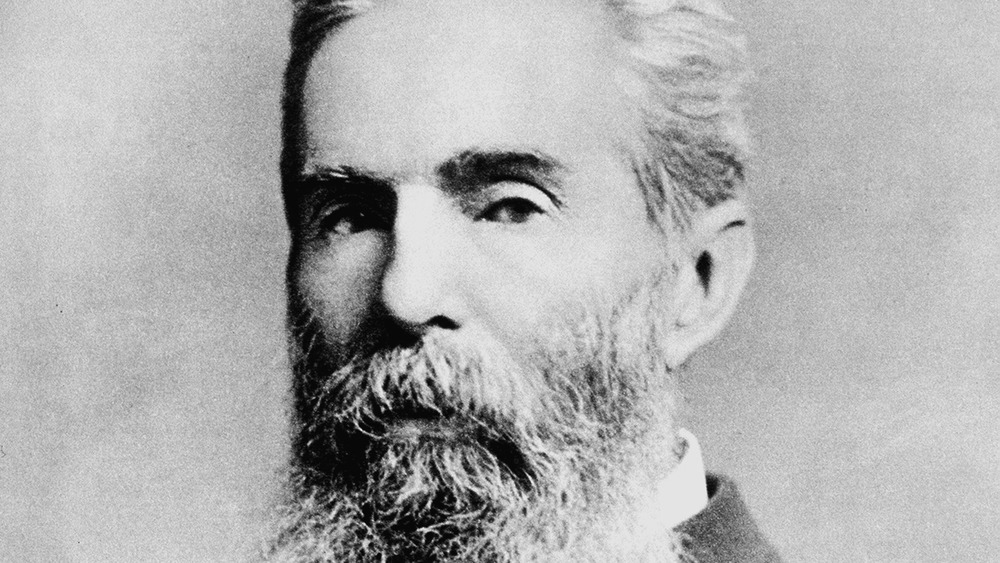The True Story That Inspired Moby Dick
Herman Melville's classic novel Moby Dick, the epic tale of the shipwrecking great white whale, is an essential part of American literature and popular culture. Since the book's publishing in 1851, Moby Dick has become the inspiration for many subsequent classic novels and made its way into every other medium imaginable. From music by Led Zeppelin to Mastodon, and films Pinocchio to Jaws, Moby Dick has proven itself to be a holy grail for symbolism, allegories, and outright references. There also many celebrities who have said it's one of their favorite books, such as President Barack Obama, Patti Smith, Joyce Carol Oates, Nile Rodgers and Bob Dylan.
One of the most riveting things about the novel is that, for all its characters' seemingly unbelievable clashes with a vengeful white sperm whale, it's based on a lot of true events. Truth is stranger than fiction, and there's many interesting twists and turns involved in the real-life events that became Moby Dick.
Melville's masterpiece wasn't well received upon its publication. It took many years for the novel build its audience. There are many reasons to appreciate the novel. Here are some true events that inspired Melville's Moby Dick.
Herman Melville never set foot on Nantucket before writing Moby Dick
It all began on a little Massachusetts island called Nantucket. According to the Nantucket Historical Association, Herman Melville never actually set foot on Nantucket before writing Moby Dick. The island was a major source of inspiration for the novel and the home of character Captain Ahab and his ship, the Pequod. There's even a chapter in the book (Chapter 14) called "Nantucket," in which Melville describes it in great detail: "Nantucket! Take out your map and look at it. See what a real corner of the world it occupies; how it stands there, away off shore, more lonely than the Eddystone lighthouse. Look at it — a mere hillock, and elbow of sand; all beach, without a background."
Melville finally visited the island on July 6, 1852, a year after Moby Dick was published. The author spent his time exploring the island and dining with locals , along with his father-in-law, Massachusetts Chief Justice Lemuel Shaw. Melville went down to the Ocean House at the corner of Broad and Centre streets, where he was able to see Capt. George Pollard's house and meet the local, whom Captain Ahab was based on. The author said of his encounter, "I — sometime about 1850-3 — saw Capt. Pollard on the island of Nantucket, and exchanged some words with him. To the islanders he was a nobody — to me, the most impressive man, tho' wholly unassuming, even humble — that I ever encountered."
The ship was actually attacked by a sperm whale
According to the Britannica, the ship in Moby Dick, the Pequod, was based on a real ship called the Essex. The ship set sail in August 1819 and was supposed to be out at sea for close to three years on a whaling voyage. With 21 crewmen aboard, it sailed around South America and into the South Pacific. According to Britannica, the ship was 87 feet in length and was previously used as a merchant vessel before being converted to a whaling ship.
On Nov. 20, 1820, the Essex was attacked by a sperm whale. The whale was estimated at 85 feet (26 meters) long, which is 20 feet longer than the size of an average male sperm whale. Most of the crewmen were out in their whaleboats. However, one boat commanded by Owen Chase had returned to the Essex ship before the attack. The whale sped towards the ship and rammed the port (left) side. It then went under the ship, resurfaced, and appeared surprised. It then went back to attacking the ship, striking the bow and damaging the ship.
The whale was making clicking noises while it attacked the ship, which means it was communicating. Some believe the whale thought the ship was another male sperm whale who was invading his territory. The Essex capsized, and the men were left in their whaleboats out in open waters.
There was actually a white whale: Mocha Dick
Herman Melville based his novel on many different sources and accounts. According to The National Ocean Service, Moby Dick was also inspired by a story Melville read in a magazine about a white whale. The magazine was called The Knickerbocker (via the Smithsonian), and the article was written by Jeremiah Reynolds in 1839, as per The New York Times. Reynolds wrote about an albino sperm whale known for its fatal attacks on whaling ships off the coast of Chile near Mocha Island.
The whale, "white as wool," described Reynolds, was called Mocha Dick, or, The White Whale of the Pacific, and was legendary among whalers. Mocha Dick was later killed and used for oil, as per Britannica. According to the New York Times, "It's unknown what led Melville to tweak Mocha to 'Moby.' Good thing he did, and that Starbuck was the name he gave his first mate rather than his captain. Otherwise the novel would follow Starbuck's obsession with a Mocha."
Biblical allusions are used throughout Moby Dick
Herman Melville used religious themes in his epic novel to bring more complexity to the characters and give its readers lots to think about. As Britannica writes, the author gave his characters names from Abrahamic religions, written as allegories. The name Ishmael was used for the narrator, who is named after the illegitimate son of Abraham. Ishmael is outcast once Abraham's legitimate son, Isaac, is born. Captain Ahab was named after the evil king who led the Israelites to idolatry. Ahab was obsessed with killing Moby Dick and did so while leading his crew to their deaths. Moby Dick is the idol, known as an evil whale, and has many different meanings, such as God.
According to the study, "Traces of Religion and Science in Herman Melville's Moby Dick," scholars have gone even further to understand the novel, saying the biblical allusions were the result of Melville's religious conflicts. Melville, basically a Christian, was confronted with questions of human existence, struggled between the Calvinistic and the Emersonian theories, and had to compromise between religion and science. While a sailor, Melville developed "a systematic knowledge" of the universe, which led him to become scientific in his thought.
The study goes on, saying, "Ishmael represents the religious mind of Melville upholding all the virtues of religion; he does not have the heroic grandeur of Ahab — an unheroic hero. Ahab is a real hero, hero of Melville's scientific self that is not prepared to admit defeat from a subhuman, a Prometheus who has descended on earth in the nineteenth century to establish the supremacy of man over creation at the cost of his own life.
A prank by a crewman may have resulted in the extinction of two different species
According to the Smithsonian, the Essex headed to Charles Island in the Galapagos to restock. While there, they collected 60 100-pound tortoises and searched the rest of the island. Thomas Chappel, one of the crewmen, decided to prank the rest of the crew by setting a fire that spread due to it being dry season. The men left the island and headed back out to sea. A day later, they could still see smoke coming from the island. Capt. George Pollard was so angry that he swore he'd punish Chappel for his prank. Many years later, it was discovered that the fire set by Chappel may have led to the extinction of the Floreana Tortoise and the Floreana Mockingbird.
Years after the Essex sank, one of the crewmen, a cabin boy named Thomas Nickerson, went back to the island. He wrote of the destruction and published an account of the Essex's sinking, saying all that was left was a blackened wasteland where "neither trees, shrubbery, nor grass have since appeared," as per Amusing Planet.
Captain Pollard was persuaded from visiting the closest island that may have saved them
According to the Smithsonian, after the crewmen fled the sinking Essex, they had to figure out the best direction to sail their whaleboats. Capt. George Pollard wanted the crew to go to the Marquesas Islands and the Society Islands, which were nearest and may have had food and supplies. However, the crew opposed, because of some disturbing rumors they'd heard. Pollard was told that the islands were run by savages, and they'd have to worry about cannibalism. They told him their best chance for survival was by sailing south.
Pollard listened and charted a new course for the crewmen. The distance to the next island would be far greater, but they knew they would have a chance if they caught trade winds or could find other whaling ships to rescue them. According to Nathaniel Philbrick's In the Heart of the Sea: The Tragedy of the Whaleship Essex, Pollard would later come to find out that while there was cannibalism on the islands, traders had been going there without any incident. Had they gone to those islands, they might have been saved.
The men were menaced by whales
The leaky whaleboats weren't the safest way of traveling at sea, but it was either that or die. While traveling at night, whales would menace the little boats. Capt. George Pollard's boat was attacked by a killer whale. Even sharks would circle their boats at times, causing more fear among the men. They were now prey to the open seas and had a long way to go before they'd reach their destination. They were at least 60 days away from reaching Chile, but they needed to find something closer in order to survive, as per Nathaniel Philbrick's In the Heart of the Sea: The Tragedy of the Whaleship Essex.
They were running out of food, which was soaked with seawater, and the weather conditions were only making it worse. "On [Owen] Chase's boat, one man went mad, stood up and demanded a dinner napkin and water, then fell into 'most horrid and frightful convulsions' before perishing the next morning," writes the Smithsonian. The men eventually spotted land. They ended up at Henderson Island, where they ate the island's birds. However, two weeks later, it was barren.
The crewmen resorted to cannibalism while stranded
Three of the men decided to stay on Henderson Island, while the remaining crew members headed back to sea. The crew drifted aimlessly for many weeks, which would eventually become a total of 92 days. The men were out of food, and they were getting sick. With no food or sign of land in sight, the crew resorted to their last option to survive: cannibalism.
They began to eat to one of their dead crewmen. According to Owen Chase's account per the Smithsonian, the crew "separated limbs from his body, and cut all the flesh from the bones; after which, we opened the body, took out the heart, and then closed it again — sewed it up as decently as we could, and committed it to the sea." Once they had the man's organs, they roasted them on a flat stone and ate them.
Three more crewmen died, and they were promptly eaten. However, their flesh didn't last as long as the rest of the crew hoped, and they only got hungrier. The men eventually became too weak to talk. One boat disappeared, and soon after, Chase's and Capt. George Pollard's boats separated. It seemed as if there was no hope for the men.
The crew were rescued by an English ship
By February 18, after 89 days at sea, three crewmen on Owen Chase's boat saw a ship in the distance. It was an English ship called Indian. After chasing it down, they were rescued. However, Capt. George Pollard's boat was 300 miles away, containing only Charles Ramsdell and the captain. Their boat was full of bones of dead crewmen that were smashed on the bottom of the boat. As time passed, the men had sunk into madness, obsessing over the bones on the boat. A week after Chase's boat was spotted, an American ship called Dauphin rescued Pollard and Ramsdell, as per the Smithsonian.
The men sucked on the bones and put the rest in their pockets as they were taken aboard the ship. Eventually, the men were reunited at Valparaíso, Chile. An Australian ship was dispatched to Henderson Island and rescued the remaining survivors. Once back in Nantucket, Chase wrote about the events and called it Narrative of the Most Extraordinary and Distressing Shipwreck of the Whale-ship Essex (originally published in 1821 and republished under various titles), as per Britannica.
Captain Pollard wasn't forgiven for eating his own cousin
One of Capt. George Pollard's crewmen was his cousin, Owen Coffin. Pollard and Coffin were among the surviving crewmen who resorted to cannibalism while stuck at sea. Once they ran out of dead men to eat, their hunger grew. On Feb. 6, 1821, teen crew member Charles Ramsdell came up with the idea to draw lots to determine who should be killed and eaten. It was actually a custom at sea, which dated back to the first half of the 17th century, as per the Smithsonian. Coffin, Pollard's own cousin, drew the lot.
Ramsdell drew the next lot, which determined who would be the killer. He drew his gun and aimed it at Coffin. He waited a long time, hesitating, as he looked at his friend and cousin of Pollard. Coffin rested his head on the boat's gunwale. Ramsdell finally made the choice and shot Coffin.
Making matters worse, Pollard had promised Coffin's mother that he'd look out for him. "My lad, my lad!" the captain shouted, "if you don't like your lot, I'll shoot the first man that touches you." Pollard had offered to step in for his cousin, but Coffin wouldn't let him and accepted his fate. "I like it as well as any other," he said. When Pollard returned to Nantucket, he wasn't forgiven for eating his own cousin. One scholar called his cannibalism "gastronomic incest." Once Pollard came home, he would lock himself in his room and fast on every anniversary of the wreck of the Essex to honor the crewmen.
Captain Pollard's second chance at sea
After returning to Nantucket, Capt. George Pollard was given another chance to command a whaling ship called Two Brothers, as per The National Ocean Service. On Feb. 11, 1823, after 18 months at sea, Two Brothers hit a shallow reef off French Frigate Shoals, as per The National Ocean Service. Pollard didn't want to abandon ship but eventually was persuaded by crew members. They got on small boats and waited all night until being rescued in the morning by another whaling ship from Nantucket.
The ship was part of a fleet of several hundred whaling ships, which helped expand America's political and economic monopoly into the Pacific. The ship was found in 2008 by maritime heritage archaeologists. As for Pollard, following the sinking of Two Brothers, he was deemed unlucky at sea and was known as "Jonah" (via the Smithsonian). He spent the rest of his life as the night watchman in Nantucket.
Moby Dick wasn't popular until long after its publication
Herman Melville grew up during the peak of the American whaling industry. The booming whaling business and Melville's own time as a sailor seem to be the makings of a great novel. Melville was even influenced by his friend, fellow author, Nathaniel Hawthorne, who was renowned for his allegorical and symbolic writing, as per Britannica. Melville revised the narrative over and over to make it more complex and eventually dedicated the book to Hawthorne because of his impact.
However, the public was disinterested when the novel was published. It sold fewer than 4,000 copies, with less than 600 books in the United Kingdom. It would take until the mid-20th century for readers to flock to the bookstores and pick up copies of the forgotten novel. Eventually, Moby Dick became one of the most important novels in American literature.
